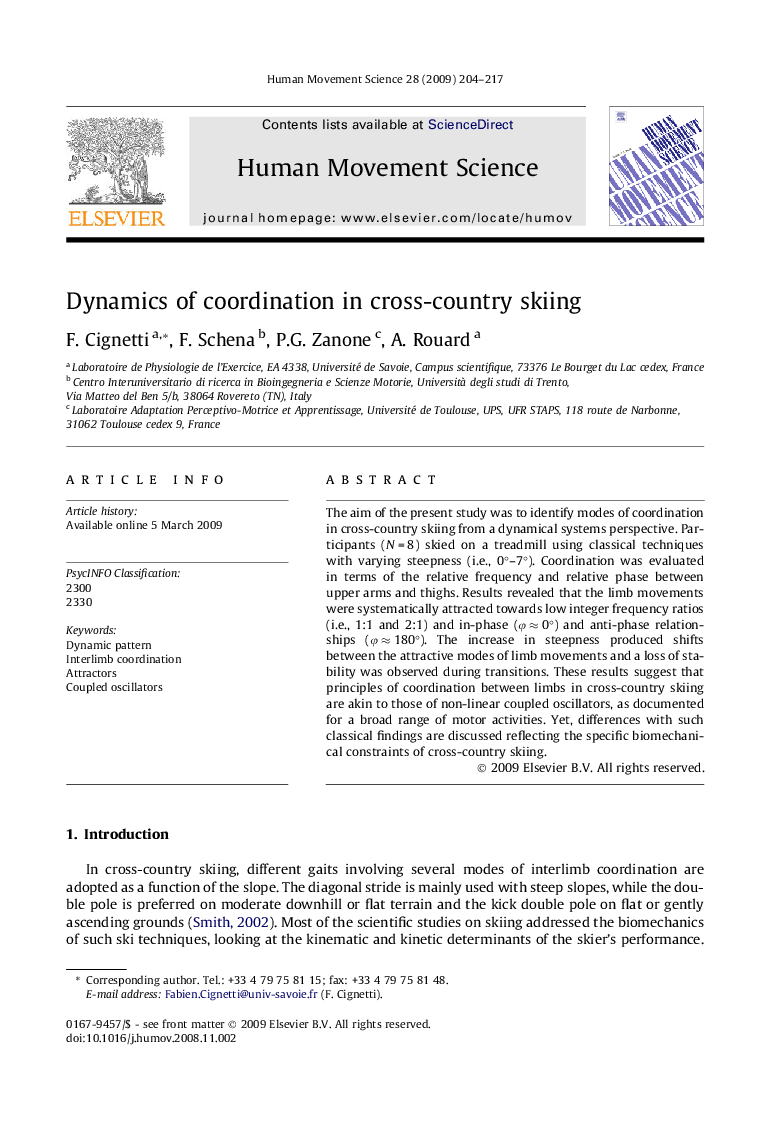| Article ID | Journal | Published Year | Pages | File Type |
|---|---|---|---|---|
| 928833 | Human Movement Science | 2009 | 14 Pages |
The aim of the present study was to identify modes of coordination in cross-country skiing from a dynamical systems perspective. Participants (N = 8) skied on a treadmill using classical techniques with varying steepness (i.e., 0°–7°). Coordination was evaluated in terms of the relative frequency and relative phase between upper arms and thighs. Results revealed that the limb movements were systematically attracted towards low integer frequency ratios (i.e., 1:1 and 2:1) and in-phase (φ ≈ 0°) and anti-phase relationships (φ ≈ 180°). The increase in steepness produced shifts between the attractive modes of limb movements and a loss of stability was observed during transitions. These results suggest that principles of coordination between limbs in cross-country skiing are akin to those of non-linear coupled oscillators, as documented for a broad range of motor activities. Yet, differences with such classical findings are discussed reflecting the specific biomechanical constraints of cross-country skiing.
